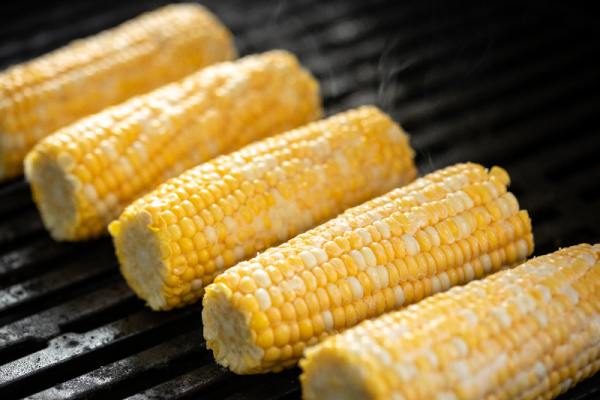Sweet Corn – Trends and Demographics

“And pray what more can a reasonable man desire, in peaceful times, in ordinary noon, than a sufficient number of ears of green sweet corn boiled, with the addition of salt?”
– Henry David Thoreau
In recent weeks, we’ve reviewed the production and consumption trends of a few summertime favorites: ice cream and watermelon. This week we’re diving into sweet corn.
Declining Acreage
In 2022, the U.S. harvested an estimated 340,000 acres of sweet corn – or just 0.5% of the area harvested for feed grain corn. Figure 1 shows the USDA’s NASS acreage estimates since 2016, which capture a notable decline of 138,000 acres, or 29%.

Figure 1. U.S. Sweet Corn Acres, 2016-2022. Data Source: USDA NASS.
State-Level Data
At the state level, the 2017 Census of Agriculture found sweet corn raised in all fifty states. In Alaska, 14 farms raised a total of three acres. In Wyoming, 11 farms produced 19 acres.
The list of top-producing sweet corn states includes a few surprises. At 22% of all sweet corn acres, Minnesota is top-ranked. Washington (14%) and Wisconsin (12%) were among the top three. While some of us might have assumed sweet corn production clustered in an I-State, keep these three states in mind as they align with the sweet corn raised for processing.
Other states with large acres of sweet corn include those with warm growing seasons – such as Florida, California, and Georgia.

Figure 2. Distribution of U.S. Sweet Corn Acreage, by State. Data Source: 2017 USDA Census of Agriculture.
Fresh Versus Processing
While fresh sweet corn is on our minds, canned and frozen sweet corn is arguably the bigger market. In 2017, 56% of all sweet corn acres harvested were for processed corn, edging out the fresh market production.
Unfortunately, state-level data gets messy as the Census had to withhold some data to avoid disclosing information about individual farms. These data were particularly an issue for fresh versus processed sweet corn in Florida and Georgia. However, Figure 3 plots the processed sweet corn acreage distribution by state.
As mentioned earlier, sweet corn production in Minnesota, Washington, and Wisconsin is primarily for canning or freezing. Further to that point, more than 90% of the acreage in those states is for processing. Figure 3 shows the allocation of processed sweet corn acreage. As expected, these three states comprise 78% of the U.S. sweet corn acreage devoted to processing.

Figure 3. Distribution of Processed U.S. Sweet Corn Acreage, by State. Data Source: USDA 2017 Census of Agriculture.
At the beginning of this article, we noted that sweet corn acreage had declined. Between the 2012 and 2017 Census of Agriculture, sweet corn acreage fell from 572,000 to 496,000 acres, or by 13%. However, digging deeper into the data reveals that most of the decline came from processed sweet corn production. Between 2012 and 2017, harvested acreage for processed sweet corn declined by 18%, which accounted for 83% of the total sweet corn acreage decline. On the other hand, fresh sweet corn acreage declined by just 5%.
Wrapping It Up
The distinction between fresh and processed production is important when unpacking the story of U.S. sweet corn.
First, the sweet corn that is eventually canned or frozen accounts for most of the total acreage (56%). Those acres are heavily concentrated in just four states – Minnesota, Oregon, Washington, and Wisconsin – and have significantly declined in recent years.
On the other hand, fresh sweet corn production is grown widely and has been less affected by recent acreage contractions.